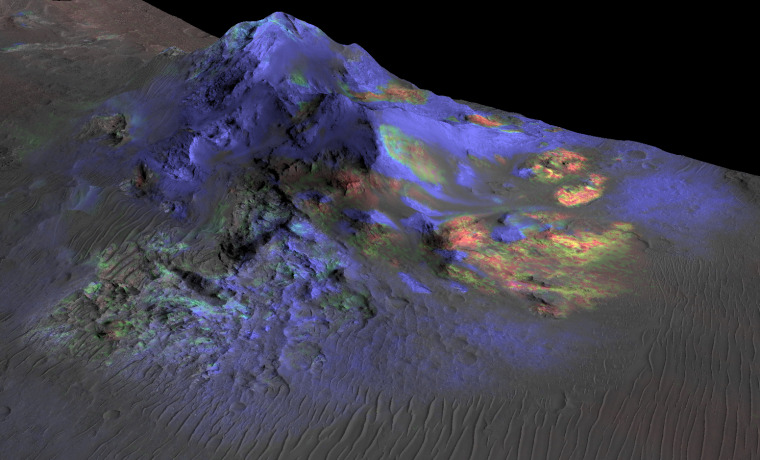Key Takeaways:
- RNA molecules can form spontaneously on basalt lava glass, which was abundant on early Earth.
- The study suggests that early impacts and volcanic activity provided ideal conditions for RNA synthesis.
- Key minerals like nickel and borate, found in basalt, play essential roles in forming RNA components.
- Similar geological conditions on ancient Mars imply that RNA-based life might have also originated there.
- This simpler RNA formation process could be tested easily in classrooms, showing potential educational value.
_______________
Basalt lava glass, abundant 4.35 billion years ago, may have jumpstarted RNA formation on Earth.
Simple Origins of Life: RNA’s Formation on Basalt Lava Glass
Scientists at the Foundation for Applied Molecular Evolution have identified a natural setting for the formation of ribonucleic acid (RNA), one of life’s essential building blocks, that could be key to understanding the origins of life on Earth. The research, published in the journal Astrobiology, reveals that RNA molecules can spontaneously form when basic ingredients interact with basalt lava glass, a material that was plentiful on Earth around 4.35 billion years ago. According to the study’s lead researchers, including Steven Benner and Elisa Biondi, this breakthrough offers a straightforward path to RNA synthesis, one that requires no complex laboratory conditions. Moreover, these findings suggest that similar conditions on ancient Mars could have supported RNA formation, raising the possibility of RNA-based life beyond Earth.
How Basalt Glass Could Spark RNA Formation
The research reveals that lava glass, formed by the cooling of volcanic basalt lava, provided essential materials for RNA synthesis. When nucleoside triphosphates—the building blocks of RNA—percolate through this glass, they can form long RNA molecules up to 200 nucleotides in length. Lava glass was especially common on early Earth, a time marked by frequent meteorite impacts and extensive volcanic activity. These events not only created lava glass but also contributed key minerals and conditions necessary for RNA synthesis. As Earth scientist Stephen Mojzsis, who contributed to the study, explained, impacts dried the landscape, creating land-based aquifers where RNA could accumulate and assemble.

Additionally, metals like nickel, released during meteorite impacts, play a vital role in forming nucleoside triphosphates. Nickel combines with nucleosides, leading to the creation of the triphosphates needed for RNA formation, while borate, a mineral found in basalt, helps regulate this process. The presence of these ingredients and the natural setup of basalt glass provided a unique environment that could foster the earliest genetic molecules needed for life.
Implications for Mars and Life Beyond Earth
The findings not only shed light on the potential beginnings of life on Earth but also open up exciting possibilities for the presence of RNA-based life on Mars. Ancient Mars, like early Earth, experienced significant volcanic and impact activity that generated similar basalt lava glass. While tectonic shifts on Earth have hidden much of the planet’s oldest surface rocks, Mars has preserved its ancient geology. Recent Mars missions have confirmed the presence of relevant minerals like borate, making Mars a strong candidate for studying life’s origins. As Benner points out, if RNA could emerge on Earth under these conditions, the same processes might have led to life on Mars.
The simplicity of this model has made it easy to reproduce in a laboratory, even suggesting that it could be tested in a high school chemistry lab by simply combining the ingredients and waiting for RNA formation. The ease of the process stands in contrast to more complex models of life’s origins that require elaborate laboratory techniques, suggesting that the natural creation of life’s building blocks might be more feasible than previously thought.
In conclusion, this discovery provides a clearer path for understanding life’s origins by identifying a single natural process that could produce RNA under early Earth or Mars conditions. The study’s simplicity and natural setting support the idea that RNA formation—and possibly life—could happen on other planets with similar geological conditions.





hiI like your writing so much share we be in contact more approximately your article on AOL I need a specialist in this area to resolve my problem Maybe that is you Looking ahead to see you
Your writing has a way of making even the most complex topics accessible and engaging. I’m constantly impressed by your ability to distill complicated concepts into easy-to-understand language.
Hey there You have done a fantastic job I will certainly digg it and personally recommend to my friends Im confident theyll be benefited from this site
Your blog has quickly become my go-to source for reliable information and thought-provoking commentary. I’m constantly recommending it to friends and colleagues. Keep up the excellent work!
Your blog is a testament to your dedication to your craft. Your commitment to excellence is evident in every aspect of your writing. Thank you for being such a positive influence in the online community.
“Simply extraordinary! ✨ Your in-depth analysis and crystal-clear explanations make this a must-read. The amount of valuable information you’ve packed in here is amazing.”
“Mind = blown! 🌟 This is exactly the comprehensive breakdown I needed. Your expertise shines through in every paragraph. Thanks for sharing such well-researched content.”
“Thanks for sharing such valuable information!”
“Great content, learned a lot from this post!”
“Thanks for sharing such valuable information!”